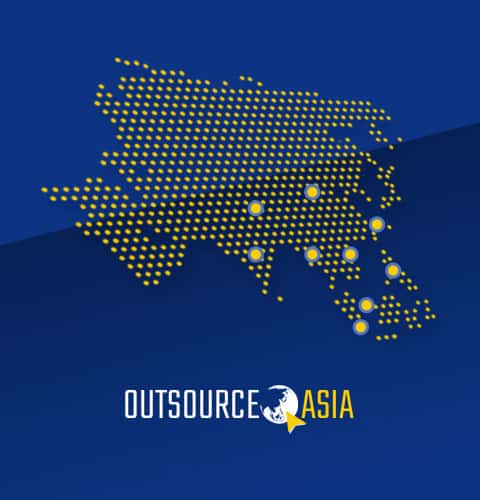Outsourcing, a key strategy for reducing operational costs and improving efficiency, has become a cornerstone of global business practices. Over the years, Asia has emerged as one of the most attractive regions for outsourcing, thanks to its vast talent pool, competitive pricing, and dynamic technological infrastructure. However, while the opportunities in Asia are abundant, they come with their own set of challenges. This article will explore both the significant opportunities, and the hurdles businesses face when outsourcing in Asia, offering a comprehensive view of this thriving industry.
The Appeal of Outsourcing to Asia
Asia’s role as a global outsourcing hub has grown significantly over the past few decades. The region offers a variety of advantages that make it an ideal location for businesses looking to outsource certain aspects of their operations.
Cost Efficiency
One of the primary reasons businesses outsource to Asia is the potential for cost savings. The cost of labor in many Asian countries is significantly lower compared to North America and Europe. This is particularly true for countries such as India, the Philippines, Vietnam, and Bangladesh, where wages are much lower but the skill levels in specific sectors, such as information technology (IT), manufacturing, and customer service, remain competitive.
Many companies leverage this cost advantage to optimize their profit margins. Outsourcing administrative tasks, customer support, software development, and manufacturing to countries with lower operating costs helps companies maintain their competitive edge in the global market.
Large and Skilled Workforce
Asia boasts a vast and highly skilled labor force. Countries like India and China, with their large populations, have an abundance of workers with expertise in various fields, particularly in IT, engineering, and manufacturing. India, for example, has long been regarded as a global leader in IT and business process outsourcing (BPO). Its workforce is well-versed in English, which makes it a preferred destination for customer service and technical support operations.
Similarly, China has developed an advanced manufacturing sector, producing everything from electronics to automobiles. Other Southeast Asian countries, such as the Philippines and Vietnam, are also growing in prominence, with the former excelling in BPO services and the latter emerging as a key player in the technology and manufacturing sectors.
Technological Advancement
Asia is at the forefront of technological innovation. Countries like Japan, South Korea, and Singapore are global leaders in technology development, particularly in areas such as robotics, artificial intelligence (AI), and blockchain. This technological prowess provides businesses outsourcing to these countries with the benefit of cutting-edge tools and practices.
For instance, many Asian countries are rapidly adopting digital infrastructure, making it easier for companies to integrate their processes through cloud computing, automation, and advanced analytics. Outsourcing to countries with such advanced technology ecosystems ensures that businesses stay at the forefront of industry developments, driving efficiency and innovation.
Challenges of Outsourcing in Asia
Despite its many benefits, outsourcing in Asia also presents unique challenges that businesses must navigate carefully. Cultural differences, regulatory landscapes, and intellectual property (IP) concerns are just a few of the obstacles that companies face when venturing into the region.
- Cultural and Language Barriers
Asia is an incredibly diverse continent, with over 48 countries and hundreds of languages and dialects. While the diversity offers a rich pool of talents, it also introduces complexities in terms of communication and cultural understanding. Business practices and social norms can vary greatly between countries and even within regions of the same country.
For example, while English is widely spoken in India and the Philippines, communication in China, Japan, or Vietnam may require fluency in the local language. Misunderstandings due to language barriers can affect project timelines and the quality of work delivered. Additionally, differences in work ethics, hierarchical structures, and decision-making processes can lead to friction if not managed with cultural sensitivity.
To mitigate these challenges, businesses often need to invest in cross-cultural training for their teams and consider hiring local consultants or managers who can bridge the gap between global standards and local practices.
2. Infrastructure and Logistical Concerns
Although some parts of Asia boast world-class infrastructure, this is not consistent across the region. In countries like Vietnam, Cambodia, and parts of India, businesses may encounter challenges related to inadequate transportation networks, inconsistent power supplies, and underdeveloped telecommunications infrastructure.
Logistical challenges can be particularly problematic for companies outsourcing manufacturing or supply chain operations. Efficient delivery of raw materials, components, and finished goods requires reliable infrastructure, and businesses must ensure that their chosen outsourcing partner is located in a region with the necessary logistical capabilities to support smooth operations.
Moreover, the disparity in infrastructure development across different Asian regions highlights the importance of conducting thorough due diligence before selecting an outsourcing destination. Businesses should prioritize working with partners that offer a robust and reliable infrastructure to avoid potential delays or disruptions in operations.
3. Regulatory and Legal Complexities
Navigating the regulatory landscape in Asia can be complex. Each country in the region has its own legal and regulatory frameworks governing labor laws, taxation, data protection, and IP rights. This can make compliance a daunting task, especially for companies unfamiliar with local laws.
In some countries, bureaucratic hurdles can slow down business processes. For example, acquiring permits or licenses may take longer than expected, and differences in business regulations across countries can complicate matters for companies looking to outsource across multiple Asian nations.
To address these challenges, companies often collaborate with local legal experts who can provide guidance on compliance with local laws and regulations. It is essential to understand the regulatory environment and develop a comprehensive strategy for navigating legal requirements in the outsourcing country.
4. Intellectual Property Concerns
IP protection is another major concern when outsourcing to Asia, particularly in countries like China and India. Although many Asian countries have strengthened their IP laws in recent years, concerns about IP theft or misuse still persist.
Businesses need to take proactive steps to protect their intellectual property, such as registering patents, trademarks, and copyrights in the relevant countries and drafting robust contractual agreements that clearly outline IP ownership and usage rights.
5. Local Competition
Local competition is often fierce in Asia, especially in sectors such as IT, manufacturing, and e-commerce. Many domestic companies have a deep understanding of the local market, consumer preferences, and business environment, which can give them a significant advantage over foreign companies trying to establish a foothold.
To mitigate this challenge, foreign companies need to conduct thorough market research to understand the competitive landscape and develop strategies that differentiate them from local competitors. Forming partnerships with local firms can also provide a way to gain market insights and build credibility.
Opportunities for Outsourcing in Asia
While there are challenges to outsourcing in Asia, the opportunities far outweigh the hurdles for many businesses. Companies that take the time to navigate the complexities of the region stand to benefit from a range of strategic advantages.
- Access to Emerging Markets
Asia is home to some of the fastest-growing economies in the world. Countries like China, India, and Vietnam continue to see rapid economic growth, fueled by a burgeoning middle class and increasing consumer demand. This presents significant opportunities for businesses to tap into these emerging markets and expand their reach.
By outsourcing to Asia, companies can gain access to these growing markets while reducing operational costs, allowing them to offer more competitive pricing to consumers.
2. Innovation and Technological Advancements
As previously mentioned, Asia is a hub for technological innovation. Companies that outsource to Asia can take advantage of the region’s advances in AI, robotics, and fintech, helping them stay ahead of global trends. Countries like Japan and South Korea are leading the way in areas such as 5G development and smart manufacturing, providing businesses with cutting-edge resources and solutions.
3. Government Incentives
Many Asian governments actively encourage foreign investment and outsourcing by offering tax breaks, special economic zones, and financial incentives to foreign companies. Countries like Singapore and Malaysia, for example, have developed dedicated agencies to attract foreign investors by offering a range of incentives aimed at fostering growth and innovation in key sectors.
4. Expansion of Fintech and Financial Services
The growth of fintech in Asia is remarkable, with countries like China, India, and Singapore leading the charge in mobile payments, digital wallets, and online banking services. Businesses that outsource to these regions can benefit from advanced fintech solutions that streamline financial transactions and improve efficiency in payment processing and fund management.
Conclusion
Outsourcing to Asia offers businesses a wide range of opportunities, from cost savings and access to a skilled workforce to technological advancements and emerging markets. However, companies must also navigate a range of challenges, including cultural differences, regulatory complexities, and IP concerns. By taking a strategic approach to outsourcing and leveraging local expertise, businesses can successfully unlock the potential of outsourcing in Asia, positioning themselves for long-term growth and competitiveness on the global stage.
Get started with Outsource Asia!
Contact us today to discuss your specific needs and learn how we can help you streamline your operations, reduce costs, and achieve greater efficiency.



